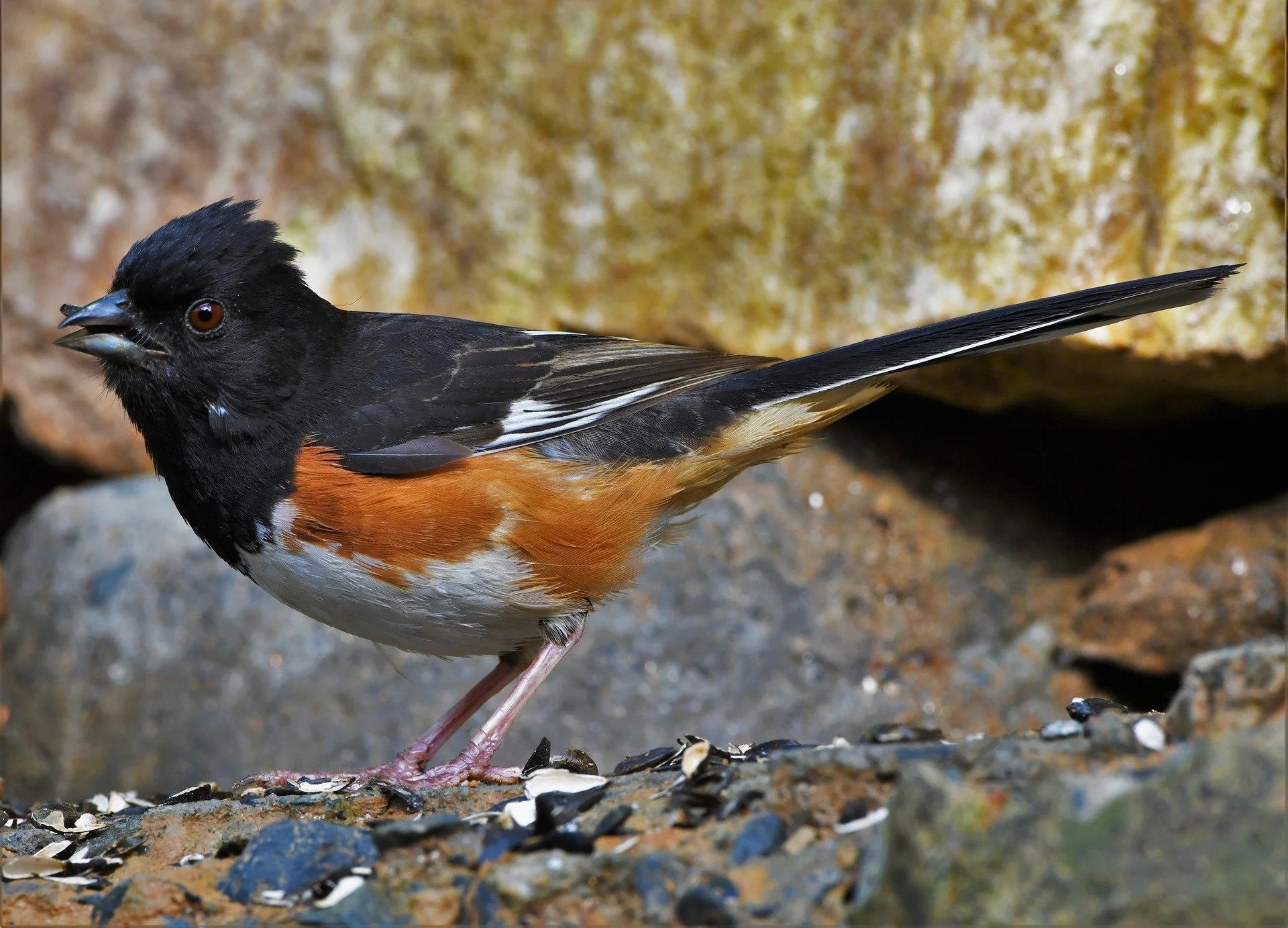Thrashing on the ground, flipping up leaves, and generally sounding like an animal much bigger than it actually is, my first experience with an Eastern Towhee opened my eyes to the ground foragers and nesters of the woods. With its steely red eyes, auburn sides, and black on top, the Eastern Towhee strikes a brash attitude on the forest floor. The female looks similar except is brown on top, striking a 70’s brown aesthetic.
The bird is perhaps best known for its pneumonic “drink your teaaaaa.” The song rattles through shrublands, cut-over lands, and barrens, which are favorite haunts of the Eastern Towhee. On breeding grounds, the birds need a certain degree of open canopy, and often the soils will dictate this sparse canopy. In northern Wisconsin, the Breeding Bird Atlas confirmations of Eastern Towhee trace the sandy districts of the northwest, northeast, and northern highland.
Female Eastern Towhee (photo by Kelly Colgan Azar).
Research shows that management for species like American Woodcock can also benefit the Eastern Towhee. Both species enjoy savannas, shrubby dry woodlands, and brushy prairies. One problem with these communities for the towhee is that Brown-headed Cowbirds also utilize this edge habitat and will readily parasitize towhee nests, sometimes up to half of a population in a given area.
I associate towhees with dry upland open woods, often filled with oak, and you can find this species at Faville Grove along the west end of Faville Woods or migrating throughout the sanctuary. Within the last week or so towhees have made a push through Wisconsin. Listen for its distinctive call, and look out for its bold patterning pairing nicely with last year’s oak leaves.
Written by Drew Harry, Faville Grove Sanctuary land steward
Cover photo via Pixabay. Male Eastern Towhee with black upperparts, a rusty side, and pale breast forages for seeds.






